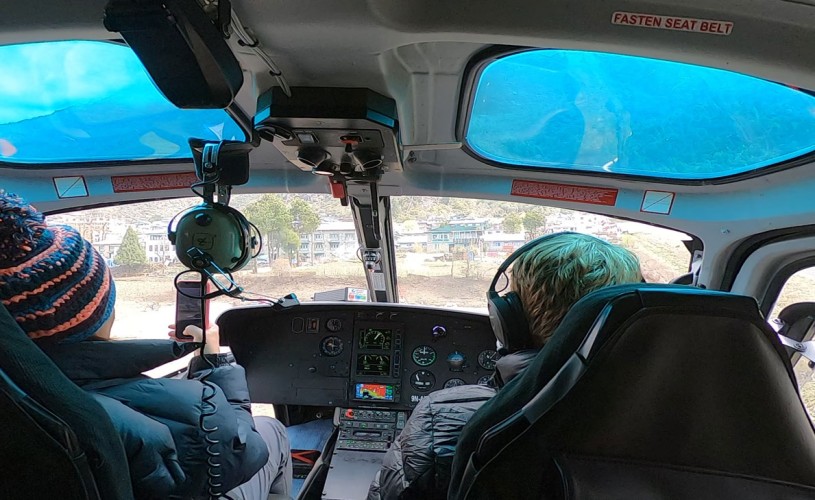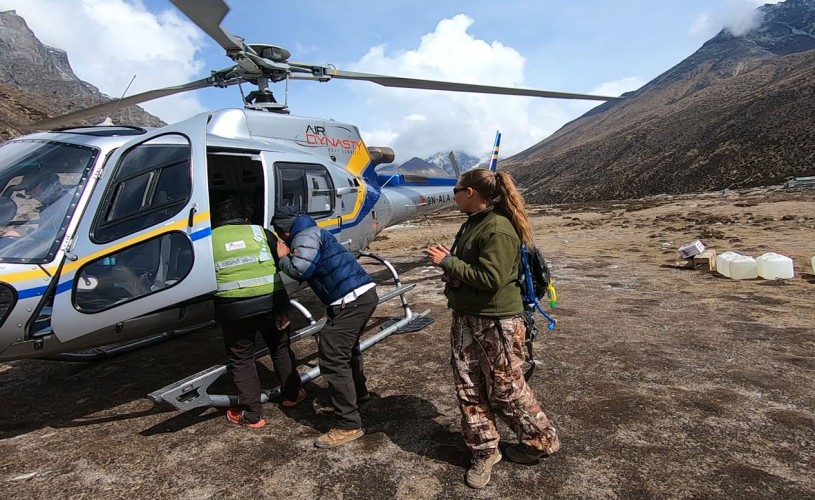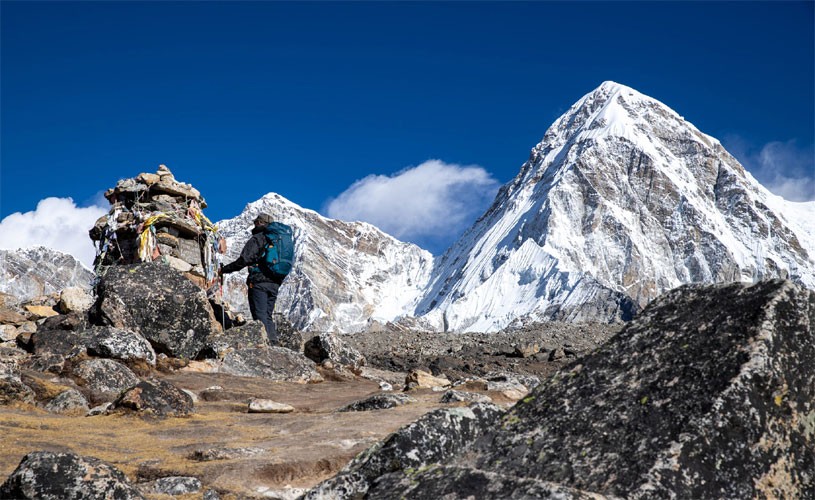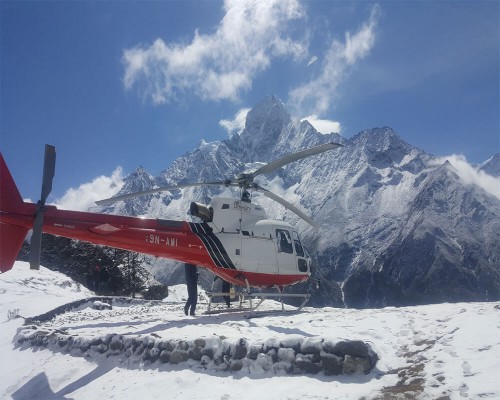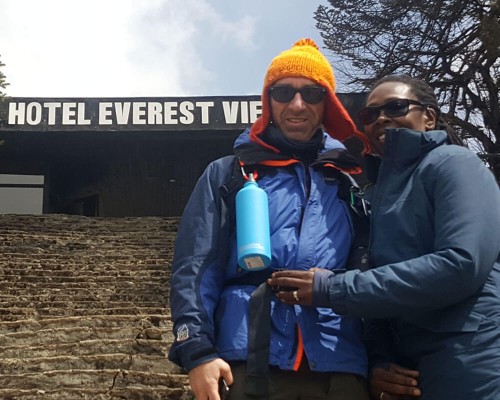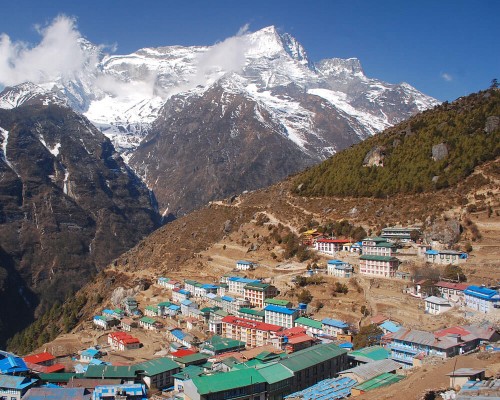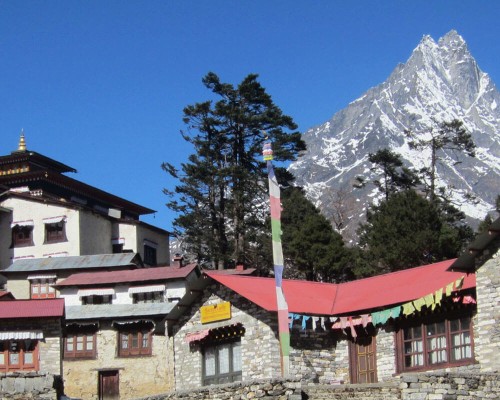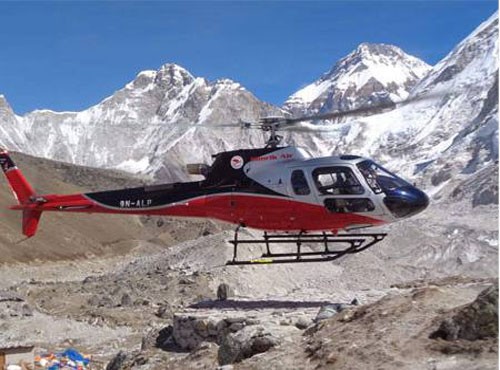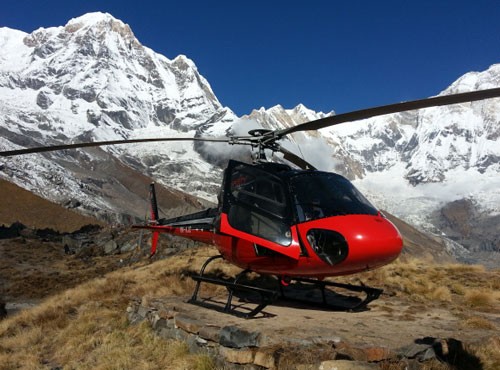Everest Base Camp Helicopter Trek Highlights
- The beautiful Everest Himalayan gateway—Lukla
- Exciting foothill excursion through the Sherpa valleys
- Experience the elite journey accompanied by the tingling bells of mountain yaks
- Sagarmatha National Park and its diversity of flora and fauna
- Namche Bazaar—the commercial hub in the Khumbu region
- Khumjung and surroundings—spiritually loaded Himalayan towns with a cultural tune
- A luxurious trip to fly over Mount Everest Base Camp
- Witnessing Mt. Everest, Everest Base Camp, Kalapatthar, Khumbu Glacier, and Icefall.
- Views of hidden Lakes, snowy peaks, woods, and valleys from different angles
Everest Base Camp Helicopter Trek Best Price 2025/2026
The Everest region offers one of the most exciting short adventures in Nepal—the 7-day Everest Base Camp Helicopter Trek. This thrilling journey combines a scenic helicopter flight from Namche Bazaar with a breathtaking flyover of Everest Base Camp (EBC) and a 10–15-minute landing at Kala Patthar (5,545 m) before returning to Lukla.
The itinerary includes a 4-day teahouse trek to Namche Bazaar, followed by the helicopter flight, which saves time on the descent while still providing the full Himalayan experience. It’s an ideal choice for travelers with limited time who wish to enjoy both trekking and aerial views of the Everest region’s majestic peaks.
Experience the ultimate Himalayan adventure with a breathtaking Everest Base Camp Helicopter Tour from Namche Bazaar (3,440 m / 11,286 ft). Soar above the scenic Dudh Koshi Valley, Tengboche Monastery, and the stunning Ama Dablam before reaching Everest Base Camp (5,364 m / 17,598 ft).
Enjoy a spectacular flyover and a 15-minute landing at Kala Patthar (5,545 m / 18,192 ft)—the best viewpoint for Mount Everest. Capture awe-inspiring photos of the world’s tallest peaks and glaciers before returning on a scenic flight to Lukla (2,860 m / 9,383 ft). This once-in-a-lifetime helicopter journey combines thrill, luxury, and panoramic Himalayan beauty in one unforgettable experience.
Embark on a journey that combines trekking to Namche Bazaar with cultural exploration in Khumjung village. Take time to acclimate while enjoying scenic vistas before indulging in a picturesque helicopter tour over Everest Base Camp and Kalapatthar. Capture stunning views of Mount Everest and neighboring peaks during the 40-45 minute flight from Namche to Everest Base Camp and back to Lukla.
The Everest Base Camp Helicopter Trip offers a seamless adventure in the Khumbu region, avoiding steep ascents and descents with a luxurious helicopter ride. Ideal for adventure enthusiasts with time constraints, this trek provides ample opportunities to explore cultural gems like Namche Bazaar and Khumjung before reaching the heart of the Everest Himalayan range at Kalapatthar.
Beginning from Lukla after a scenic flight from Kathmandu, the trek immerses you in the Himalayan landscape, with yaks dotting the terrain and colorful prayer flags adorning bridges and shelters. Arriving at Namche Bazaar, a rest day allows for acclimatization and exploration of nearby attractions like Khunde, Everest View Hotel, and Khumjung Monastery.
The highlight of the 7-day EBC Helicopter Trip is the breathtaking helicopter ride from Namche to Kalapatthar. Flying over Everest Base Camp offers unparalleled views of Mt. Everest, Lhotse, Makalu, Ama Dablam, and more.
Adventure Club Trek, a leading organizer of adventure trips in Nepal, offers customized itineraries to suit your preferences and budget, ensuring a memorable experience in the Himalayas. Feel free to reach out with any questions about the trip.
If this itinerary doesn’t meet your needs, we offer flexible alternatives like the Everest Base Camp Trek with Scenic Helicopter Return (11 Days). Experienced trekkers can also choose shorter adventures—the 10-day EBC,9-day EBC, or 8-day Everest Base Camp Helicopter Return Trek—each delivering breathtaking Himalayan views and a thrilling helicopter return journey.
To book your trip:
Booking a shared or a private Everest Base Camp helicopter trek is simple. Just let us know your preferred date and share your details to confirm your booking. We can help you choose the right time for your trip. You can reach out to us via email or phone through social media, as mentioned below.
For 24/7 direct assistance, call Mr. Birendra at +977-9851025658 (WhatsApp and Viber).
You can also contact us via email at [email protected].
For instant booking, click the "Book Now
Alternatively, visit our Contact Us page: Click Here
How Much Does the Everest Base Camp Heli Trek 7 Days Cost?
The cost of a private helicopter flight from Namche Bazaar to Everest Base Camp (EBC), with a 10-minute landing at Kala Patthar (5,545 m / 18,192 ft) and return to Lukla (2,860 m / 9,383 ft), varies depending on several factors such as season, helicopter availability, number of passengers, and landing permissions.
Based on recent data, the typical price range is as follows:
- Sharing basis (2 passengers): approximately USD 1,250 per person
- Private charter flight (exclusive use): approximately USD 2,500 total
For your specific route (Namche → Kala Patthar → Lukla), the price is usually on the higher side because it includes the premium landing at Kala Patthar and a return flight via Lukla.
Note: The prices above are based on current rates published on our website. However, if fuel prices, government taxes, or operational costs increase, the total cost may be adjusted accordingly at the time of booking.
How difficult is the Everest base camp trek with a helicopter Return - 7 days?
The Everest Base Camp Trek with Helicopter Return—7 Days is considered moderately challenging and suitable for trekkers with a good level of fitness. Unlike the longer classic route, this itinerary involves trekking only up to Namche Bazaar (3,440 m), followed by an exciting helicopter flight to Everest Base Camp (5,364 m) with a landing at Kala Patthar (5,545 m) for breathtaking close-up views of Mount Everest. The trail includes some uphill and downhill walking, but it is well-paced and manageable for most people. The shorter duration minimizes physical strain while offering the same incredible Himalayan experience, stunning landscapes, and Sherpa culture. However, proper preparation and acclimatization are still essential to ensure a safe and enjoyable journey in the high-altitude environment.
When Is the Best Time for the EBC Helicopter Trek?
The best time will be from March to May and mid-September to December, when most days are clear for fabulous views of peaks with Mt. Everest. March to May falls during spring to pre-summer times when days are longer with enough sunlight for views and to enjoy mountain panoramas. Still, it can be windy in the afternoon and might get cloudy sometimes, and the chance of snow is higher in higher elevations. Around this time, the hills are lively with wildflowers in full bloom with riots of colors, especially flowering rhododendron (the national flower of Nepal).
Mid-September to December is another best time when most of the days are clear for stunning views of peaks, but there are short sunlight hours and much cooler freezing temperatures of the arctic zone climate.
Weather in Everest Base Camp
Nepal Himalaya for all seasons; however, for clear and nice views, all months of the year except the wet monsoon months from mid-June to mid-September; Everest base camp, due to high elevation, is most of the year clear for fine views of the mountains and lovely scenery of giant peaks.
March to May, where days are mild with a minimum of -05°C to a maximum of 20° Celsius most of the time with clear mornings and afternoons, can be cold in the morning and evening as well as in shades.
Mid-September to December is fine from morning till afternoon most days, with chances of snow sometimes where the temperature can be freezing, with a minimum of -10°C to a maximum of 15°C without a wind chill factor that brings more cold.

